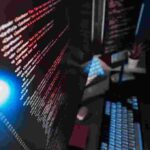In an era where Artificial Intelligence (AI) is reshaping every corner of the digital landscape, a pressing question has surfaced in the world of cybersecurity: Can AI replace cybersecurity jobs? With rapid developments in machine learning, automation, and intelligent threat detection systems, it’s not surprising that this debate is gaining traction. But while AI continues to evolve at breakneck speed, cybersecurity is a field that thrives on human intuition, adaptability, and context. So, let’s break this down in a humanized, realistic, and comprehensive way.
1. The Rise of AI in Cybersecurity
AI is not just a buzzword anymore—it’s everywhere. From smart assistants to autonomous vehicles, AI has shown immense potential in automating complex tasks. In cybersecurity, AI is being deployed to detect anomalies, automate responses, conduct threat intelligence, and even predict future attacks.
Security Information and Event Management (SIEM) tools, behavior analytics platforms, and endpoint protection solutions now rely heavily on AI and machine learning (ML) to provide faster and more accurate threat detection. Companies like CrowdStrike, Darktrace, and Palo Alto Networks are leading this charge with AI-driven products.
But while AI is making significant strides, does it mean the end of the human cybersecurity workforce? Let’s dig deeper.
2. What AI Can Do in Cybersecurity
Before jumping to conclusions, it’s crucial to understand what AI can do effectively:
a. Threat Detection and Analysis
AI can analyze vast amounts of data in real-time to detect patterns indicative of malicious behavior. It can flag anomalies, detect zero-day vulnerabilities, and even help in forensic investigations.
b. Automated Responses
AI can respond to low-level security incidents autonomously. For instance, isolating a compromised system or blocking suspicious IP addresses.
c. Phishing Detection
AI models can scan emails, websites, and messages to detect phishing attempts more accurately than traditional rule-based systems.
d. Threat Hunting
AI tools assist human analysts in threat hunting by correlating data from multiple sources and suggesting areas to investigate.
e. Security Automation
AI automates routine tasks like log analysis, vulnerability scans, and patch management, freeing up human experts for more strategic roles.
3. What AI Cannot Do (Yet)
Despite the buzz, AI has its limitations:
a. Contextual Understanding
AI lacks human intuition and contextual reasoning. It can flag a threat, but it might not understand the why or how behind it.
b. Ethical and Legal Judgments
Handling sensitive data, privacy considerations, and making ethical decisions require human oversight.
c. Adaptive Thinking
Cyber attackers constantly evolve their tactics. While AI can learn, it often needs retraining to adapt to new threat models.
d. Incident Response Management
In high-stress situations like ransomware attacks or major breaches, human judgment, communication, and leadership are irreplaceable.
e. Deception Detection
Sophisticated social engineering attacks often involve psychological manipulation—something AI still struggles to understand or detect accurately.
4. The Human Side of Cybersecurity
Cybersecurity is not just about detecting threats. It’s about understanding human behavior, predicting actions, responding with empathy during crises, and making strategic decisions that align with business goals.
Human roles in cybersecurity span across:
- Cyber Threat Intelligence Analysts who study attacker behavior.
- Incident Responders who deal with breaches and communicate with stakeholders.
- Penetration Testers and Ethical Hackers who think like attackers.
- Compliance Officers who navigate legal frameworks.
- Security Architects who design resilient systems.
These roles require creativity, critical thinking, emotional intelligence, and cross-functional collaboration—all areas where AI still falls short.
5. The Ideal Future: AI and Humans Working Together
Instead of thinking of AI as a job killer, it’s more productive to view it as a tool—a powerful assistant that enhances human capabilities.
a. AI as the First Line of Defense
Let AI handle the noise—routine alerts, false positives, and minor incidents—so human analysts can focus on high-impact threats.
b. Human-AI Collaboration
Imagine a Security Operations Center (SOC) where AI provides instant threat context and suggestions, while human analysts make informed decisions.
c. Upskilling and Reskilling
Cybersecurity professionals must adapt by learning how to work with AI. Skills like data science, AI ethics, and automated scripting are becoming increasingly important.
d. Strategic Decision Making
While AI provides insights, humans will continue to make strategic decisions—like budget allocation, security investments, and risk assessments.
6. Emerging Roles Due to AI
Interestingly, AI is also creating new job roles in cybersecurity:
- AI Security Analysts: Professionals who manage and secure AI models.
- Security Data Scientists: Experts who build models for threat detection.
- Adversarial AI Researchers: Specialists who study how attackers can manipulate AI systems.
- AI Ethics and Compliance Officers: Professionals who ensure AI usage adheres to regulations and ethical standards.
So rather than shrinking the job pool, AI is diversifying it.
7. Industry Opinions: What Experts Say
Cybersecurity thought leaders largely agree that AI will augment, not replace, human professionals.
“AI is a tool. It can help reduce the burden, but it can’t replace the judgment, intuition, and creativity that humans bring to cybersecurity.” – Kevin Mitnick, late cybersecurity expert and author.
“We need human analysts more than ever. The threats are evolving fast, and AI, while powerful, still needs human oversight.” – Katie Moussouris, CEO of Luta Security.
Even reports by organizations like Gartner and (ISC)² stress the need for human oversight in AI-driven cybersecurity.
8. Real-World Scenarios: AI vs. Human
Scenario 1: Phishing Email
AI flags a suspicious email. It’s well-crafted and mimics a company executive.
- AI: Flags it based on pattern deviation.
- Human: Recognizes the personal tone used and confirms with the executive that it’s fake.
Scenario 2: System Anomaly
A server behaves abnormally.
- AI: Flags a CPU spike as a DDoS attack.
- Human: Realizes it’s just an internal stress test scheduled by IT.
These examples show how crucial human judgment remains.
9. The Cybersecurity Talent Gap
Another reason AI won’t replace jobs soon is the massive cybersecurity skills shortage. According to a 2024 report by (ISC)², the global cybersecurity workforce needs to grow by over 4 million professionals to meet demand.
AI can help close the gap—but not replace it. Organizations still need skilled professionals to design, implement, and monitor AI systems.
10. Final Thoughts: Embrace, Don’t Fear
So, can AI replace cybersecurity jobs?
Not entirely. Not now. Maybe never.
AI is a game-changer, no doubt. It’s transforming the cybersecurity landscape, making threat detection faster and more precise. But the human element—empathy, intuition, context, ethics—remains irreplaceable.
The future of cybersecurity isn’t AI vs. humans. It’s AI with humans. Those who learn to collaborate with AI, adapt to new tools, and continuously upgrade their skills will not only survive but thrive.
If you’re in cybersecurity, now’s the time to embrace AI—not as a competitor, but as a powerful ally.





